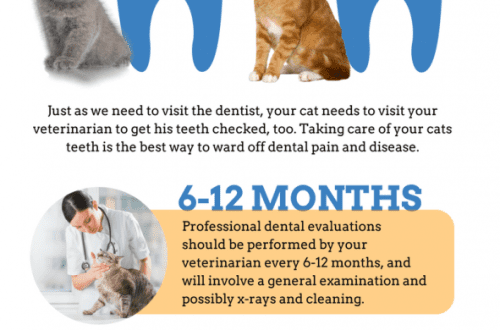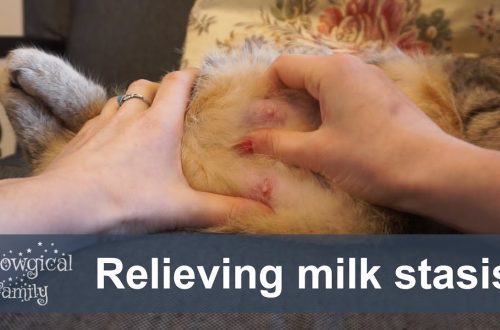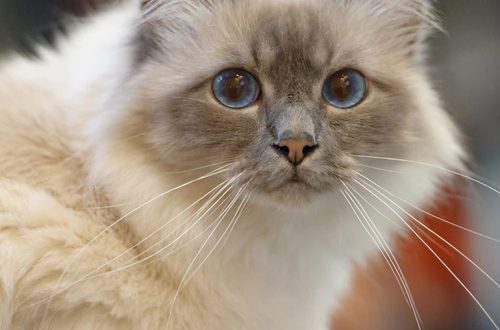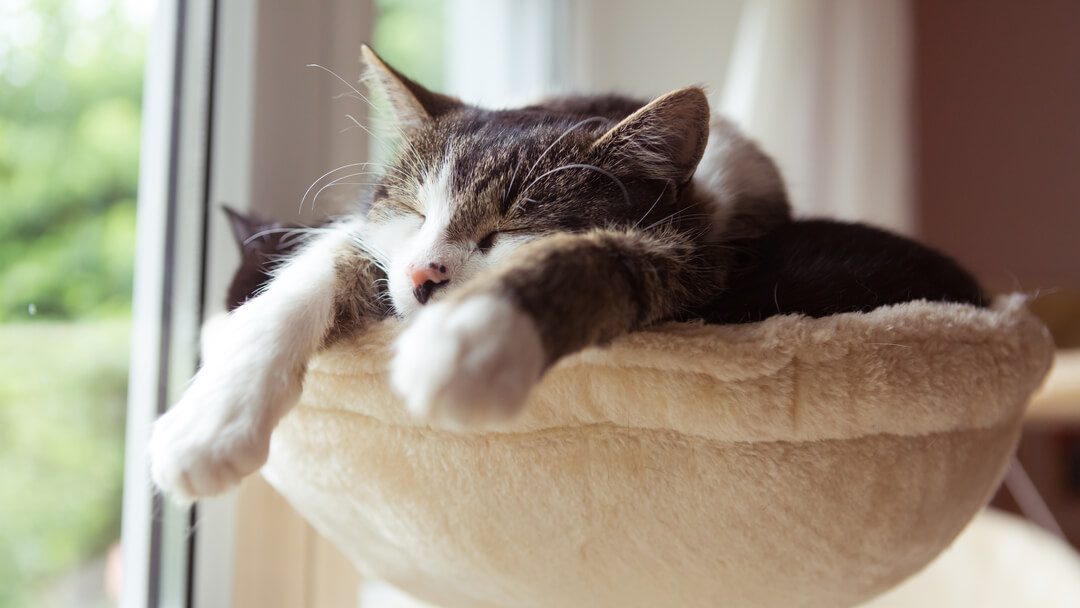
Do cats dream and why do cats meow in their sleep?
Cat owners are well aware of how much sleep their pets need. It gives them the strength to feel good, eat and play throughout the day. But do cats have dreams and nightmares? Why does a cat twitch in sleep? Any owner wonders if funny toy mice are dancing in the head of his sleeping pet.
Do cats dream and what
The nature of dreams excites people for a long time. As far back as ancient Greece, great thinkers were thinking about the state of sleep in humans and animals, but it wasn’t until the 1950s that researchers discovered and identified REM sleep in humans, also called rapid eye movement sleep (REM).
REM sleep, which is the last phase of the cycle, occurs about ninety minutes after falling asleep and lasts from ten minutes to an hour. Since a person’s sleep has more than one cycle, the REM phase can occur several times. It is in this phase that the most vivid dreams are dreamed, because the brain is most active at this time.
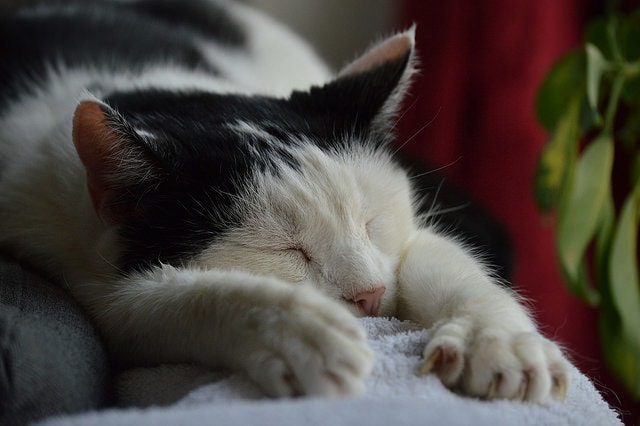 Although there is some empirical evidence that people dream during REM sleep, the answer to the question of why this happens is not so obvious.
Although there is some empirical evidence that people dream during REM sleep, the answer to the question of why this happens is not so obvious.
Some signals sent to the cerebral cortex during sleep are important for learning and memory, while others seem completely random. It is these random signals that can form the basis of the “story” that the cerebral cortex tries to interpret or make sense of, which leads to dreams. People know that dreams can be quite strange and difficult to understand. This is the state of REM sleep.
Humans are not the only mammals that have REM sleep. In the 1960s, scientists confirmed that cats also go through deep and REM sleep.
“Like humans,” writes John Kline, a clinical psychologist and fellow at the American Academy of Sleep Medicine, in Psychology Today, “cats exhibit characteristic eye movements during REM sleep, and an EEG (electroencephalogram, or study of electrical activity in the brain) shows low voltage activity. They also have a loss of muscle tone (atony), supposedly designed by nature to prevent attempts to act out the content of dreams.
If a cat’s eyes twitch during sleep, it is in a state of REM sleep.
That being said, Kline says the evidence for REM sleep is not “absolute confirmation” that a cat dreams in the same way as a human. Because animals can’t tell anything, there’s no way to know how similar their experiences are to humans.
But the physical evidence we’ve received, particularly atony, a relaxed state of the muscles that sometimes borders on temporary paralysis during sleep, indicates that something is going on in the cat’s imagination.
Sounds
Cats love to sleep and do so for about twelve to sixteen hours a day.
If the cat decides to take a nap, he will fall asleep in any convenient place that turns up, for example, on the owner’s lap, on a laptop (if he wants your attention) or in a cozy, sun-drenched corner. He needs these short naps to recuperate and reset himself for the next round of feedings and play.
When owners learn how their furry friends sleep, they quickly discover that deep sleep does not always go quietly for a cat. While in dreamland, she will twitch, stretch, snore, and make strange noises. This is why a cat twitches while sleeping. These physical movements associated with REM sleep in cats are similar to human sleep behavior.
In 1959, French neuroscientist Michel Jouvet conducted a study on cats that had the “mechanism” of atony disabled. Jouvet “modified a cat’s brain to disable a mechanism that prevents movement during REM sleep,” writes Liz Langley for National Geographic. During NREM sleep, the animals slept peacefully, and then, upon entering REM sleep, “sleeping cats raised their heads as if observing invisible objects, arched their backs, and behaved as if they were chasing prey and engaging in a fight.”
Although Jouvet was unable to prove what cats dream about, he concluded that animals whose movement was hindered by atony also physically responded to the images that appeared during REM sleep. This indicates the state of dreams.
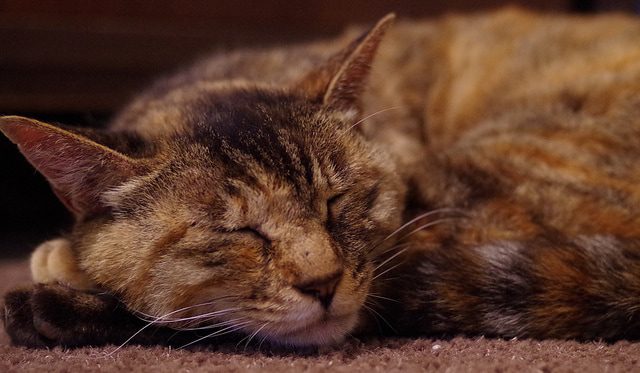 As Jason G. Goldman noted in an article for BBC Future, in addition to studying the physical reactions of animals during sleep, “researchers can now peer in humane ways at the electrical and chemical activity of animals’ brain cells while they sleep.” In their 2007 experiment, MIT scientists Louise Kenway and Matthew Wilson mapped the brain cells in the hippocampus—the center of emotion and memory—in mice when they were awake and running through their mazes, and then when they were asleep.
As Jason G. Goldman noted in an article for BBC Future, in addition to studying the physical reactions of animals during sleep, “researchers can now peer in humane ways at the electrical and chemical activity of animals’ brain cells while they sleep.” In their 2007 experiment, MIT scientists Louise Kenway and Matthew Wilson mapped the brain cells in the hippocampus—the center of emotion and memory—in mice when they were awake and running through their mazes, and then when they were asleep.
“Kenway and Wilson found identical signal patterns during movement and during REM sleep. In other words, says Goldman, the rats seemed to be mentally running through a maze while they slept. The results were so clear that the researchers could figure out the exact location of the rats in their dream mazes and match them on the map with real points inside the real maze.” These data confirm with a fairly high probability that many animals do have realistic dreams.
What do cats dream about
It is almost impossible to determine the content of cat dreams for certain, since there is no way to communicate directly with furry friends.
As Dr. Adrian R. Morrison of the Anatomy Laboratory of the School of Veterinary Medicine and the Institute of Neurological Sciences at the University of Pennsylvania, who led the study published in the Journal of Sleep Research, points out, humans know next to nothing about what cats think, let alone what they dream about.
Since pets do not keep dream diaries, their owners will never know for sure what images, thoughts, sensations, or ruminations are going on in a cat’s mind during sleep.
Perhaps the cat is dreaming about her dinner, or she is chasing her favorite toy, or maybe she is dreaming about the one she loves most in the world – about the owner.
Photo by John Brinn/CC BY 2.0
Фото nteee/CC BY-SA 2.0



